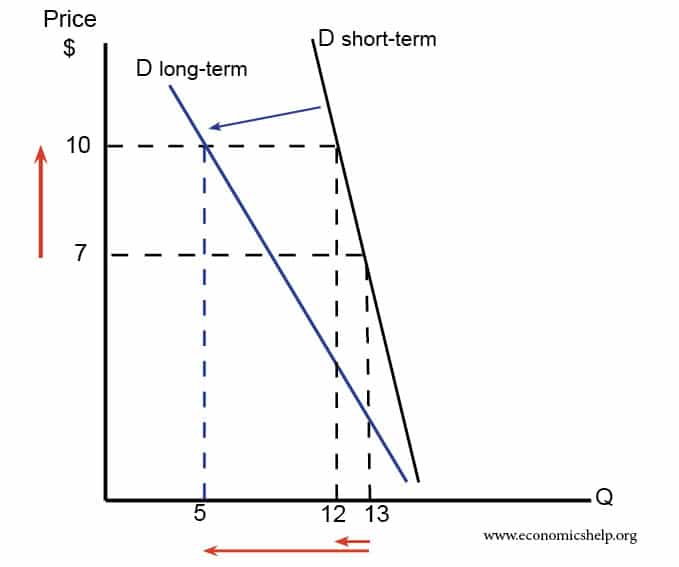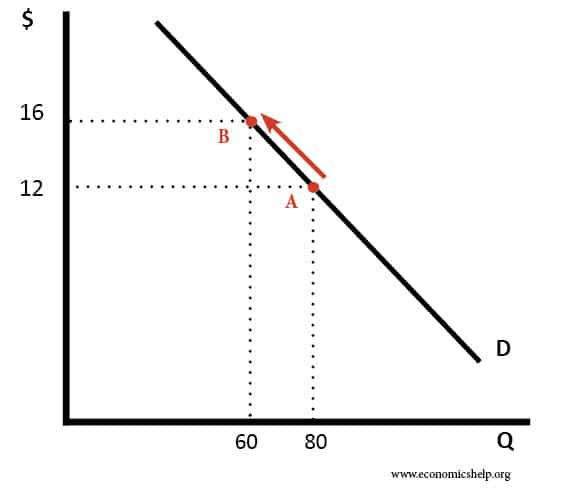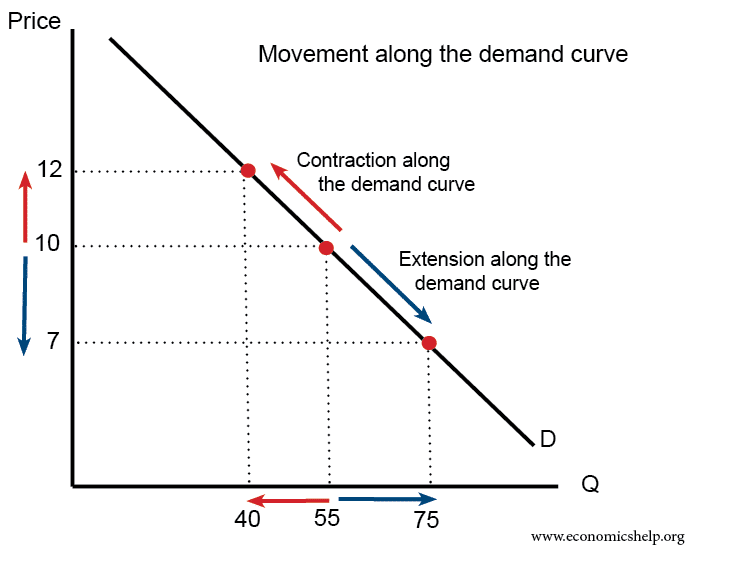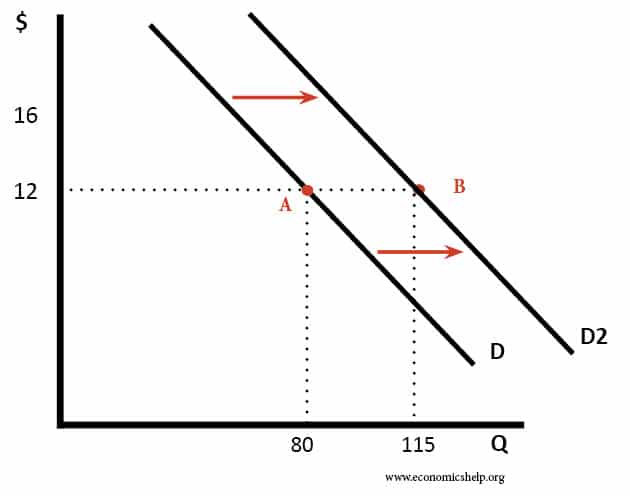A shift in demand means at the same price, consumers wish to buy more. A movement along the demand curve occurs following a change in price.
Movement along the demand curve
A change in price causes a movement along the demand curve. It can either be contraction (less demand) or expansion/extension. (more demand)
Contraction in demand. An increase in price from $12 to $16 causes a movement along the demand curve, and quantity demand falls from 80 to 60. We say this is a contraction in demand
Expansion in demand. A fall in price from $16 to $12 leads to an expansion (increase) in demand. As price falls, there is a movement along the demand curve and more is bought.
A change in price doesn’t shift the demand curve – we merely move from one point of the demand curve to another.
Shift in the Demand Curve
A shift in the demand curve occurs when the whole demand curve moves to the right or left. For example, an increase in income would mean people can afford to buy more widgets even at the same price.
The demand curve could shift to the right for the following reasons:
- The good became more popular (e.g. fashion changes or successful advertising campaign)
- The price of a substitute good increased.
- The price of a complement good decreased.
- A rise in incomes (assuming the good is a normal good, with positive YED)
- Seasonal factors.
Evaluation – Time period
In the real world, a higher price could cause a movement along the demand curve, but in the long-term, it could cause a shift as consumers respond to the persistently higher prices.





Good work. Self explanable
Brief and to the point. Thank you
good explanation indeed;
more than self explanatory ,thank you.
It worked for me, thank you.🙋
This was great, Thanks.
Thank you. Concise and well explained.
Well explained
Helped alot thank you
Can anyone give an answer for ” differentiate the change in demand and change in quantity demand with suitable examples”
Very useful
Loved it !!
It made the topic on my tips !! 😉
Brief but clear. Thanks
Well explained indeed
very clear and better explained than in class…thank you!